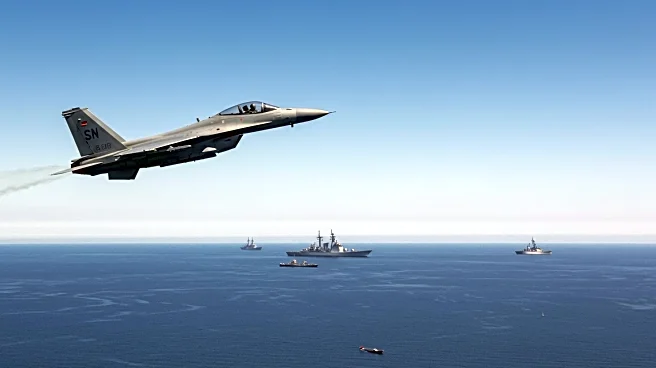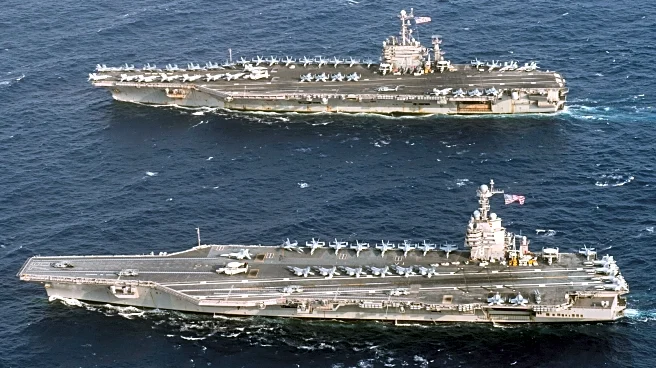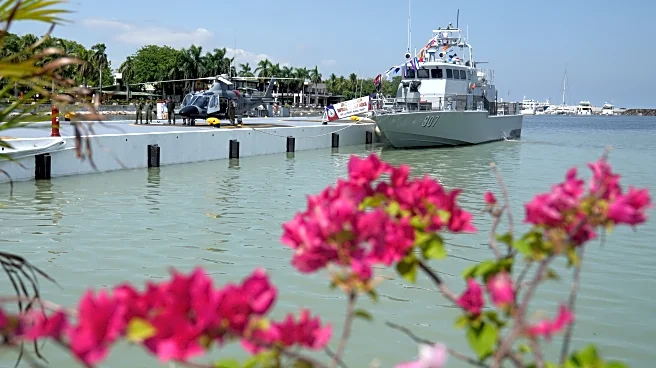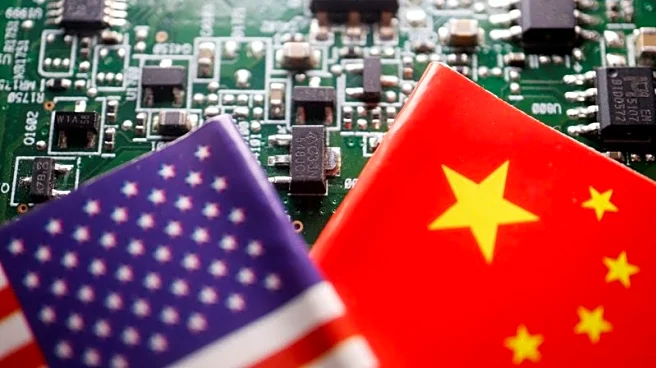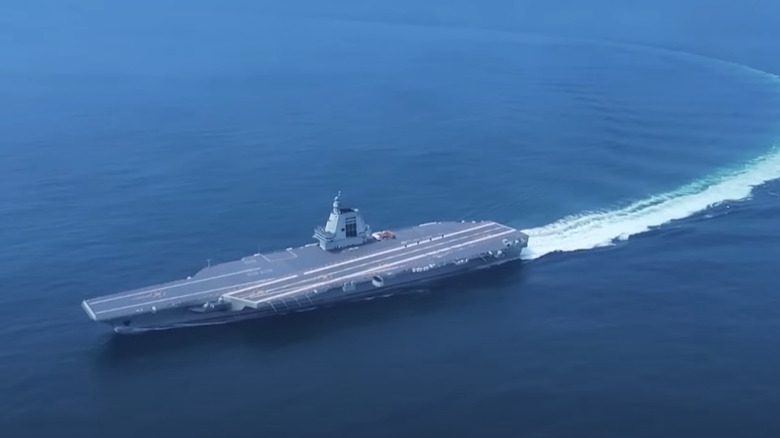
In today's modern naval landscape, where aircraft carriers reign supreme, nuclear propulsion technology defines the geographic scope of a country's strategies. Offering extended range, larger carrier capacity, and greater speeds, nuclear-powered aircraft carriers extend a country's ability to project naval and aerial power beyond its immediate area. The United States, for instance, depends on its eleven Ford and Nimitz-class carriers to secure its global military presence. Of the six other countries
deploying aircraft carriers, only France possesses a nuclear-powered one: the 42,000-ton Charles de Gaulle.
China, which possesses the world's largest naval fleet, may be next to add the groundbreaking technology. Beijing has added three aircraft carriers since 2012, making its fleet of carriers the second-largest in the world. While rumors of Beijing's desire for a nuclear-powered carrier have circulated for years, the technology has eluded the Eastern power thus far. However, China may have made significant strides towards realizing these ambitions, as satellite images from late 2024 revealed that China was building a land-based prototype nuclear reactor designed for a large surface ship outside of Leshan.
A few months later, images of China's prolific Dalian shipyard lent further credence to these claims, showing Beijing experimenting with what many believe to be the preliminary designs of a Type 004 carrier capable of rivaling American carriers in size, capability, and nuclear propulsion. These rumors come during what may be the largest naval buildup in recent history, with China turning its PLA Navy from a global afterthought to one increasingly capable of realizing geopolitical ambitions deep into the Indo-Pacific and beyond.
Read more: What Engines Are In The SS United States?
China's Budding Carrier Fleet
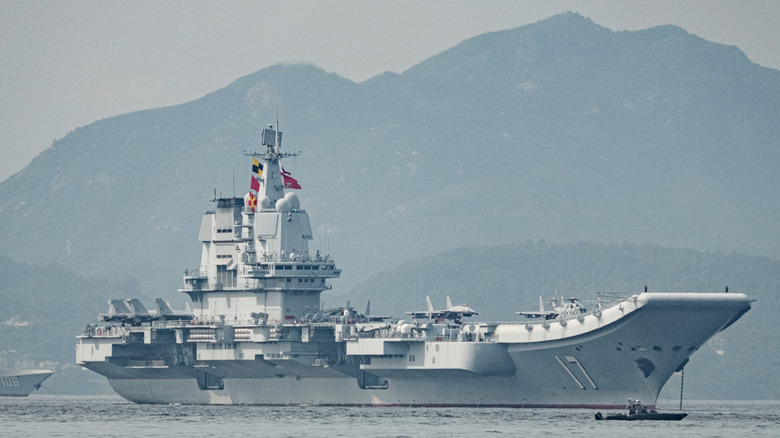
Since 2000, China has orchestrated an incredible naval buildup, utilizing the world's premier shipbuilding industry to add 220 ships to support its foreign policy. And while most of the nation's fleet consists of smaller vessels for patrolling the littoral waters of the South China Sea, the PLA Navy's latest aircraft carrier has Western observers concerned about both the capabilities and objectives of Beijing's growing fleet.
To date, China's fleet of three aircraft carriers relies on traditional steam-powered engines. Its first aircraft carrier, dubbed the Liaoning, commissioned in 2012, displaces 60,000 tons and carries up to roughly 41 fighter jets and helicopters. The Shandong Type 0002 carrier, commissioned in 2019, is of a similar size and capacity to its predecessor. China's third carrier, the Type 003 class Fujian, is undergoing trials in the Yellow Sea. Expected to become operational by the end of 2025, the Fujian represents a major leap in both capabilities and ambitions.
The Fujian is the largest non-nuclear ship in the world, its 80,000 tons larger than all but its American nuclear-powered counterparts. Paired with the country's first electromagnetic aircraft launch system, the Fujian will be capable of launching a larger and more varied set of aircraft than the Liaoning and Shandong, upgrading China's ability to execute decisive first strikes. Experts note that the greatest advantage may be that it provides China with the experience necessary to operate its fourth aircraft carrier, likely a nuclear-powered supercarrier rivaling the U.S.'s in size and capability.
China's Potential Fourth Aircraft Carrier
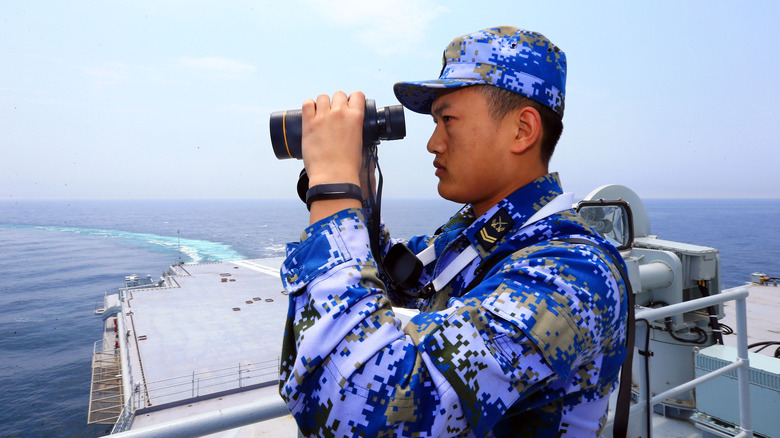
In November 2024, researchers at the Middlebury Institute of International Studies found that China had built a prototype of a nuclear reactor capable of powering the country's rumored supercarrier. According to its report, shared with the Associated Press, photographs and corroborating public documents revealed that China's 701 Institute — the sector responsible for China's carrier program — is likely orchestrating a nuclear aircraft carrier project dubbed Dragon Might. Three months later, images of China's Dalian shipyard showed engineers developing a supercarrier with potentially four electromagnetic catapult launching systems. While some remain skeptical, these reports suggest that China's fourth carrier may challenge the U.S.'s in size, launch capacity, and, most importantly, nuclear propulsion capabilities.
While a nuclear aircraft carrier would be the jewel of China's navy, the more interesting development may be its timing. Historically, China has focused its naval operations on its immediate area, largely limiting its exercises and fleet expansion to coastal waters within the so-called first island chain (which includes islands with U.S. bases, such as Taiwan and Okinawa) of the South China Sea. In recent years, however, Beijing has steadily expanded its naval operations, conducting aircraft carrier exercises beyond that threshold.
Adding the Fujian and a Type 004 nuclear-powered aircraft carrier may point towards a Beijing capable of capitalizing on its military ambitions in Africa, Latin America, and the Middle East, where China has invested heavily in military, commercial, and maritime infrastructure. Some analysts suspect China may use these investments to establish naval outposts, similar to its expansion of the Chinese-funded port-turned-military base in Djibouti.
Want the latest in tech and auto trends? Subscribe to our free newsletter for the latest headlines, expert guides, and how-to tips, one email at a time.
Read the original article on SlashGear.
